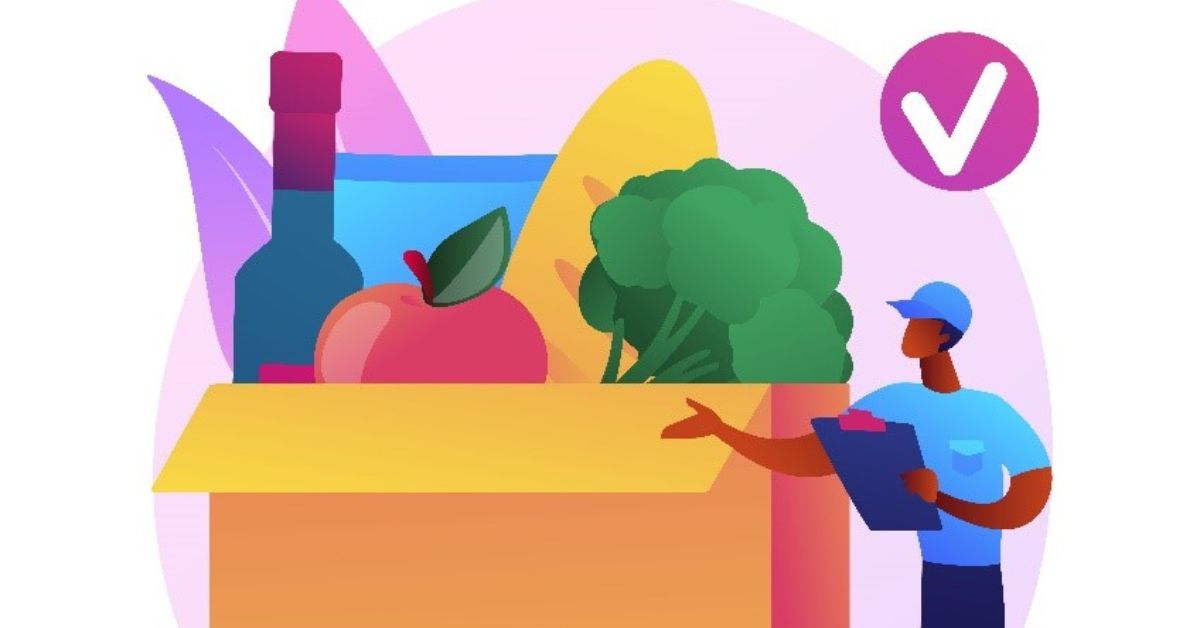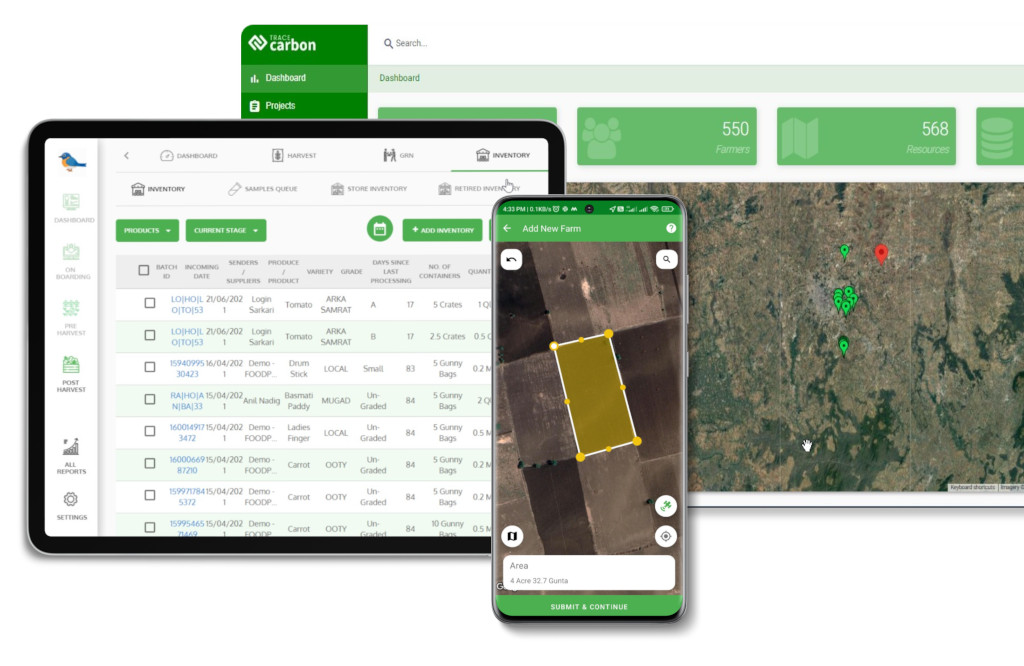Contact: +91 99725 24322 |
Menu
Menu
Quick summary: Discover why traceability is critical in the fruit and vegetable supply chain — from compliance and cold chain to quality and consumer trust. Learn how digital solutions simplify it.

Traceability ensures every fruit and vegetable can be tracked from farm to fork, helping prevent food safety issues, meet global regulations like FSMA, and build consumer trust. It reduces recall risks, streamlines audits, and supports transparent, responsible sourcing.
According to WHO, an estimated 600 million people globally fall ill and 420,000 die every year due to food contamination.
With rising food safety incidents, pesticide residue alerts, and strict regulations like the FDA’s FSMA, global buyers now demand complete visibility — from farm to fork. Whether you’re an exporter of grapes, a mango aggregator, or a procurement lead at a retail chain, a missing plot record or pesticide detail can result in rejected shipments, lost trust, and regulatory penalties.
This blog breaks down exactly why traceability matters, what’s at stake if it’s missing, and how to fix it fast with digital traceability solutions tailored for the fruit and vegetable supply chain.
Key Takeaways
Traceability in fruits and vegetables is all about transparency, trust, and accountability — for farmers, distributors, retailers, and conscious consumers. It’s the ability to track produce from seed to shelf, recording every significant touchpoint along the way.
Imagine picking up a shiny apple from the supermarket shelf. Wouldn’t it be powerful to know exactly where it was grown, what was sprayed on it, how it was stored, and how far it travelled to reach you? That’s the promise of traceability — a growing necessity in today’s food supply chain, not just a nice-to-have.
Traceability begins long before the harvest. It starts with what goes into the soil.
For growers, this means being able to prove good agricultural practices. For retailers, it means offering customers cleaner, safer produce. And for consumers, it’s reassurance on every bite.
Key Stages
Not all traceability systems are built the same. Depending on your goals and tech readiness, you might use different models:
Each type serves a purpose — your choice depends on what your customers demand, what regulators require, and what your business can support.

Let’s get real: what kind of data are we talking about?
These data points, when captured accurately, help you tell a story of care, safety, and origin — and that story builds trust and drives sales.
Today, traceability isn’t just about checking a compliance box — it’s a business advantage. Forward-looking farms and agribusinesses are turning it into a tool for profitability, credibility, and market access.
Agriculture is full of risk. Crops are perishable, transport is unpredictable, and losses between harvest and sale can quietly eat away at your margins. That’s where traceability steps in.
By tracking key data points like harvest time, storage conditions, and cold chain temperatures, you get real-time visibility. If a temperature spike happens in transit, you know exactly when and where — so you can act fast before the produce spoils.
Buyers — whether retail chains, exporters, or processors — don’t just want good produce.
They want proof.
They want to know:
When you can show traceability records — pesticide logs, geo-tagged farm plots, storage timelines — you give buyers something priceless: confidence.
And confidence leads to better deals, repeat business, and in many cases, premium pricing.
See how agri-businesses are using geo-tagged farm data to track organic practices, ensure compliance, and simplify audits.
[Read the Case Study] to learn how digital geo-mapping is transforming organic traceability from the ground up.
Markets like the EU, US, and Gulf states have strict regulations. They don’t just want high-quality produce — they want digital proof of origin, safety, and handling practices.
With a robust traceability system:
Export readiness isn’t just about what you grow — it’s about what you can prove.
Discover how a major agri-produce exporter used TraceX to build transparent and sustainable supply chains.
[Read the Case Study] and see how digital traceability is unlocking global market access and buyer confidence.
If you’re still depending on notebooks, spreadsheets, or handwritten harvest logs, you’re not alone — but you’re definitely at risk.
The problem?
Many producers rely on smallholder farmers, each with different recordkeeping habits (or none at all).
That leads to incomplete or inconsistent traceability trails.
For exporters and aggregators, this means:
Not all produce is harvested, graded, or labeled consistently. This creates gaps between what was picked, when, by whom — and what’s shipped.
Without standard data capture:
Even if you track harvests well, traceability breaks down during transport if the cold chain isn’t monitored.
No temperature logs =
Too many businesses treat traceability as a compliance headache or a reactive fix when something goes wrong.
But in reality?
It’s your engine for trust.
Trust with buyers. Trust with regulators. Trust with consumers.
That’s the power of traceability done right.
Let’s start where the supply chain begins — with the farmer.
In many sourcing regions, smallholders still don’t have laptops or ERP systems. What they do have? Mobile phones.
A good platform meets them where they are.
Forget trying to connect fields and packhouses with paperwork or stickers that peel off.
With QR-based batch tracking, each harvest becomes instantly traceable — from crate to container.

Most traceability platforms stop at the farm gate. But what happens after harvest can make or break a shipment — especially for perishables.
With IoT-enabled cold chain monitoring, you can:
Data is powerful — but only when it’s visible and actionable.
Digital platforms pull all the moving parts into a single live dashboard, so your team isn’t chasing updates over WhatsApp or Excel.
You get:
Digital platforms that bring together farmers, field agents, packhouses, logistics, and buyers in one traceable journey don’t just meet compliance — they build competitive advantage.
From farm to fork — made simple, smart, and scalable.
Traceability in fruits and vegetables is notoriously tricky.
Why? Because you’re dealing with perishable goods, fragmented farms, and fast-moving supply chains that span from smallholders to global retailers.
TraceX’s Traceability Platform is purpose-built to simplify this journey — digitizing every step, every crate, and every harvest.
TraceX begins at the source of truth — the farm.
Once the produce is harvested, TraceX tags each batch or crate with a QR code, creating a digital identity.
No more chasing updates across WhatsApp, Excel, and whiteboards.
TraceX offers live dashboards showing:
Whether you’re shipping grapes to the EU or mangoes to the Middle East, TraceX simplifies export readiness:
In today’s food system, traceability isn’t optional — it’s essential. It empowers producers to prove origin, enables exporters to meet regulatory standards, and helps retailers deliver on consumer expectations for safety, sustainability, and transparency.
With the right digital platform, like TraceX, fruit and vegetable supply chains can go from fragmented to connected — and from reactive to resilient.
Traceability isn’t just about data. It’s about trust.
It’s the ability to track produce from the farm to the final buyer, including data on origin, inputs, harvest, handling, and transport.
Export markets require proof of origin, safety, and sustainability. Traceability ensures compliance with standards like Global G.A.P. and EUDR.
It reduces paperwork, speeds up onboarding, improves visibility, and helps smallholders access high-value markets.
